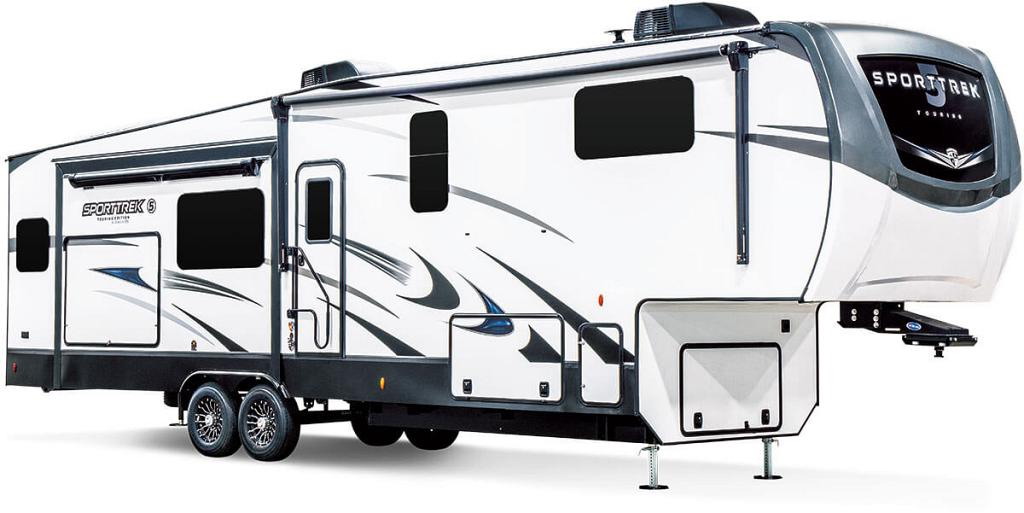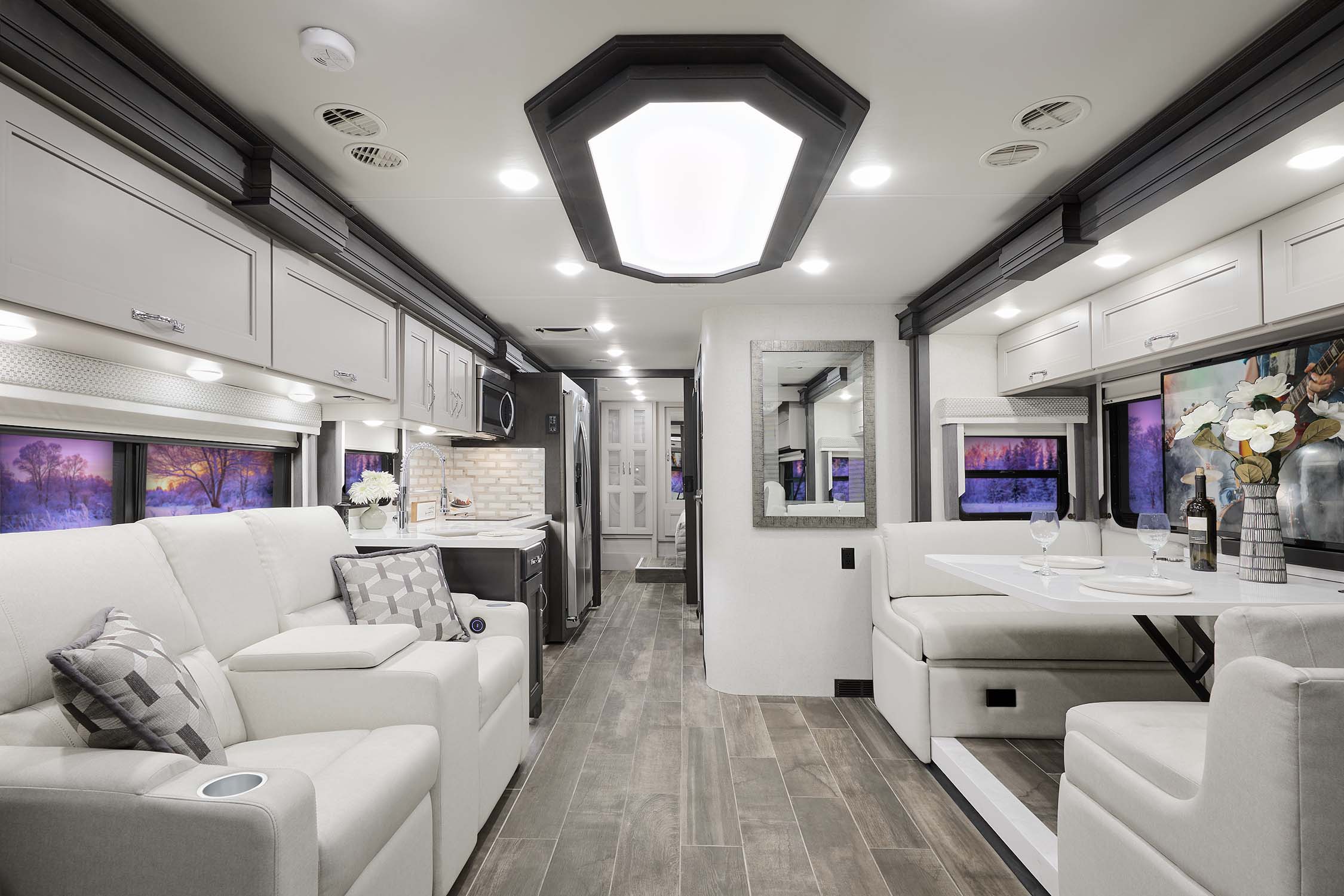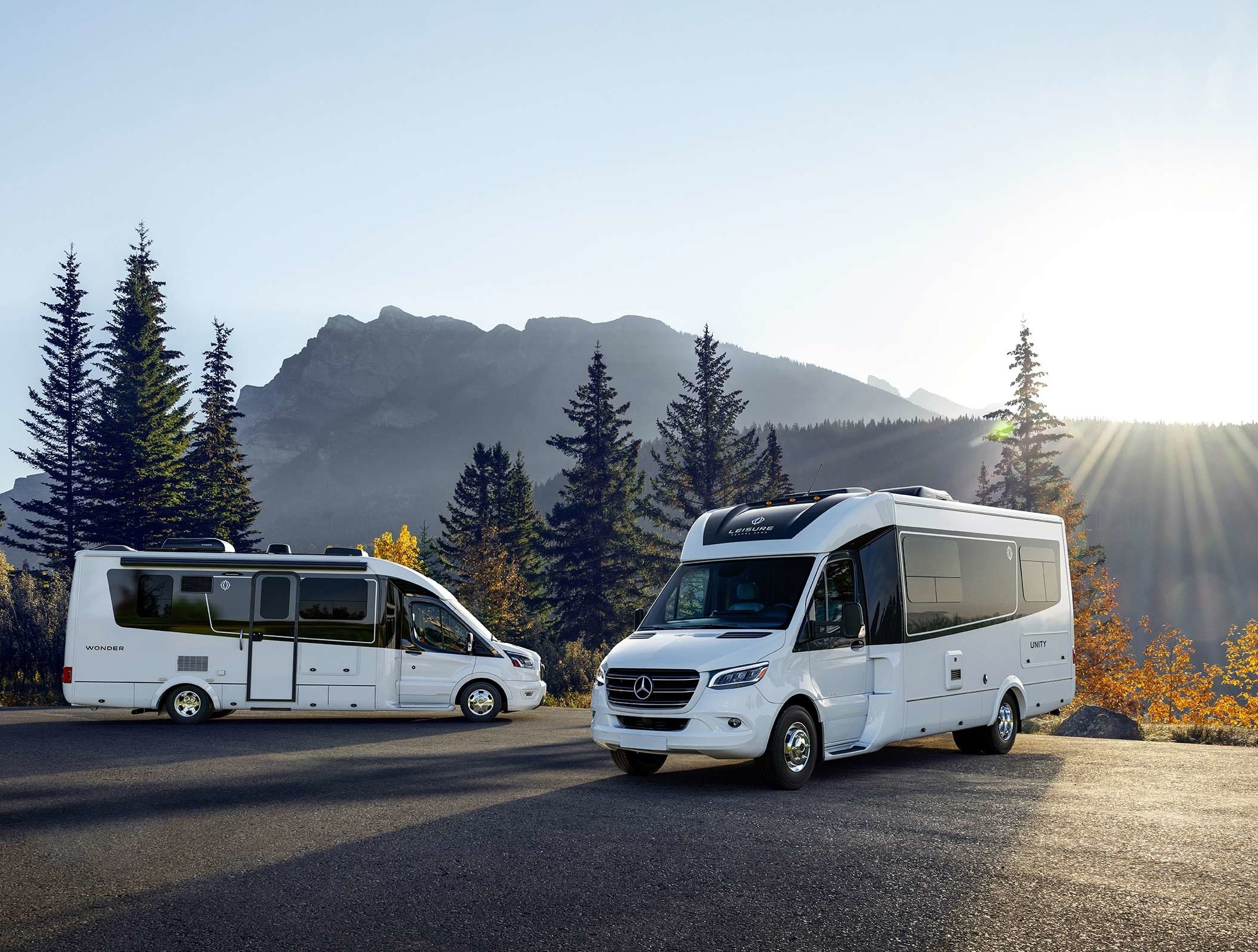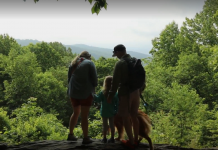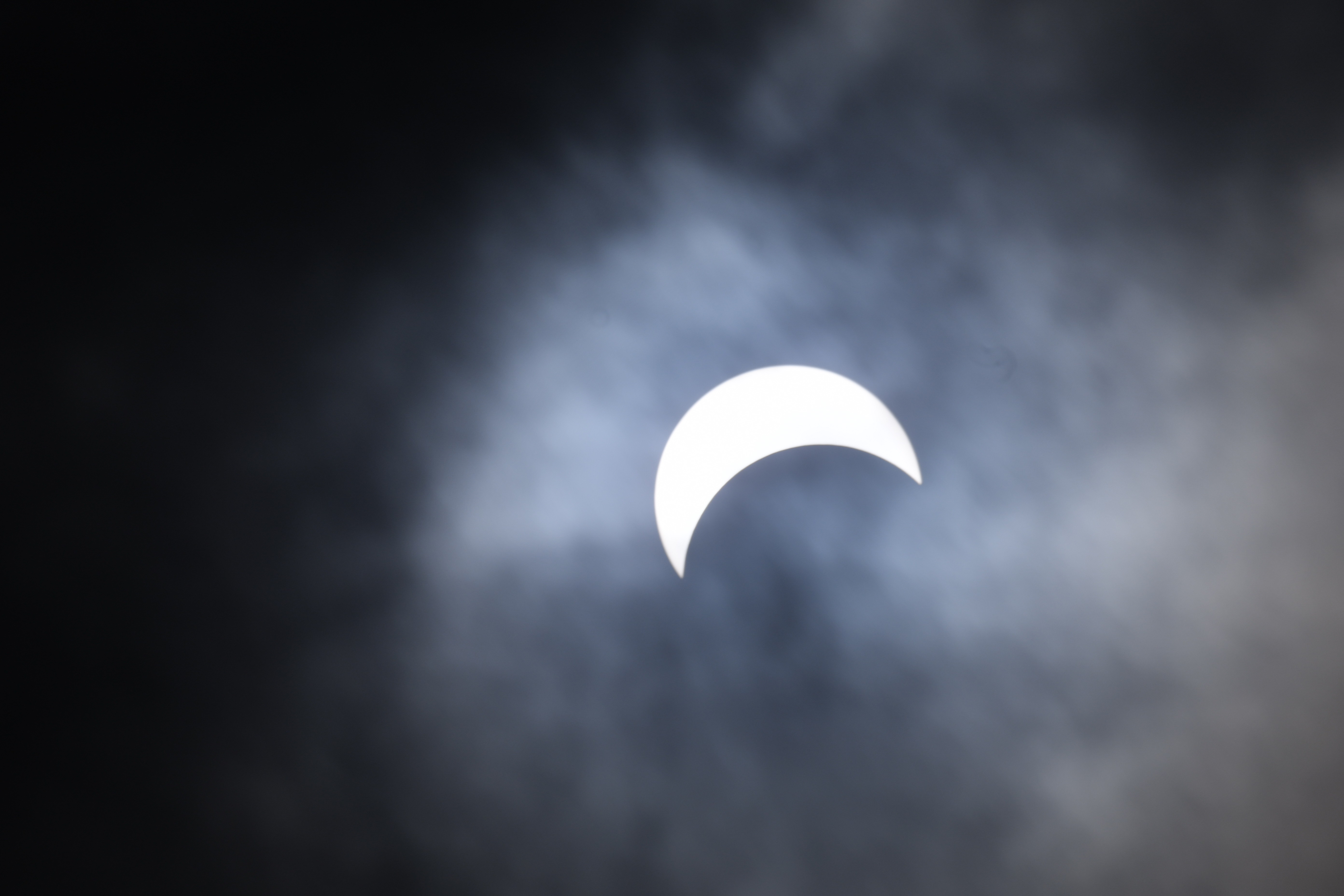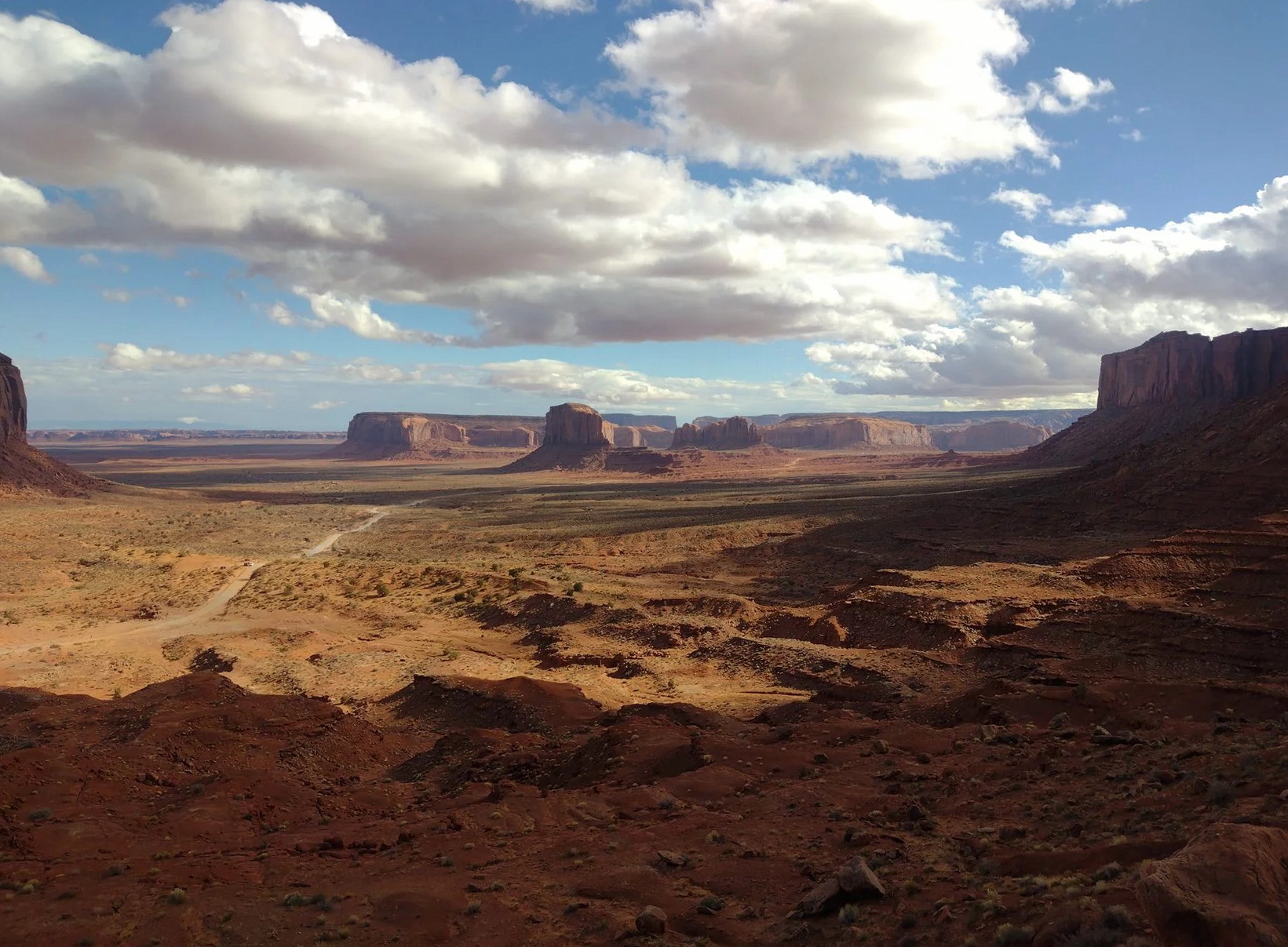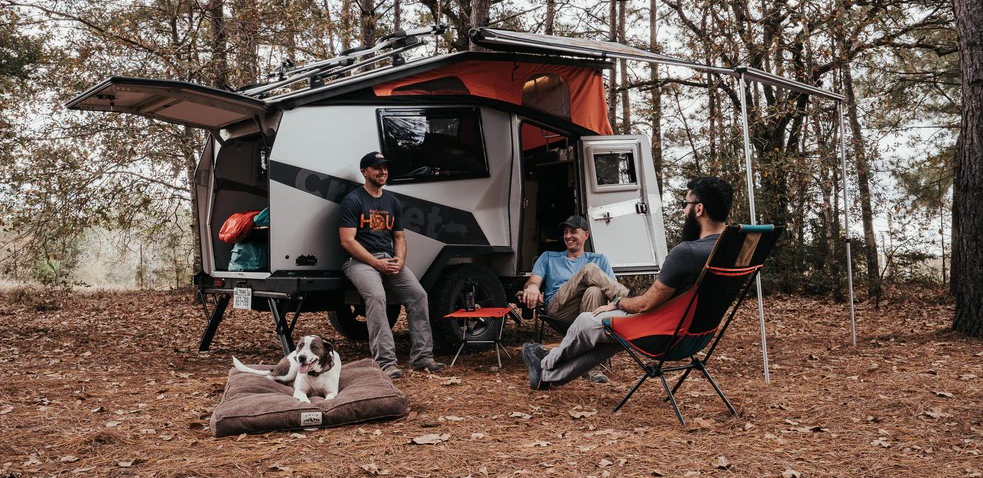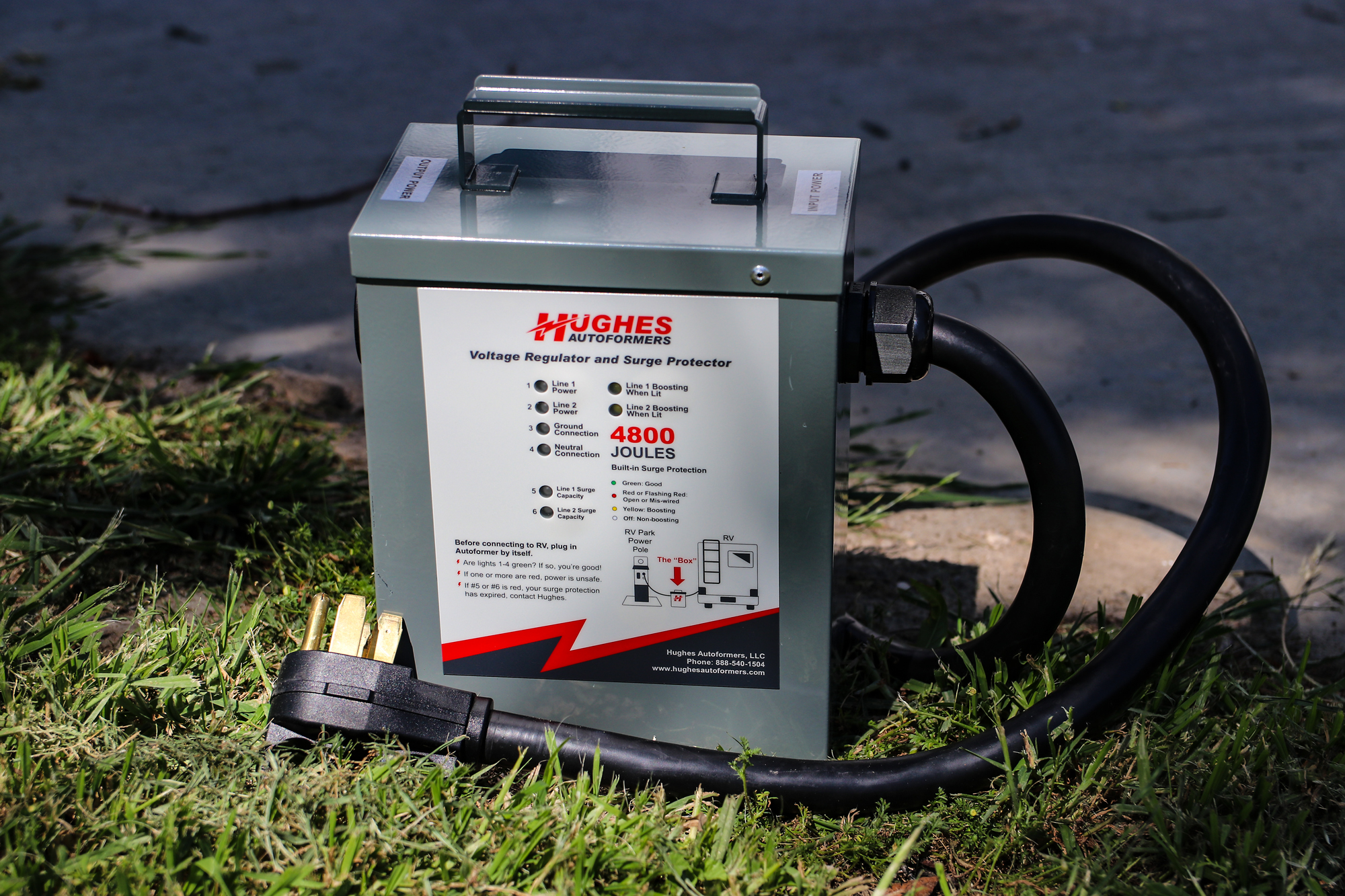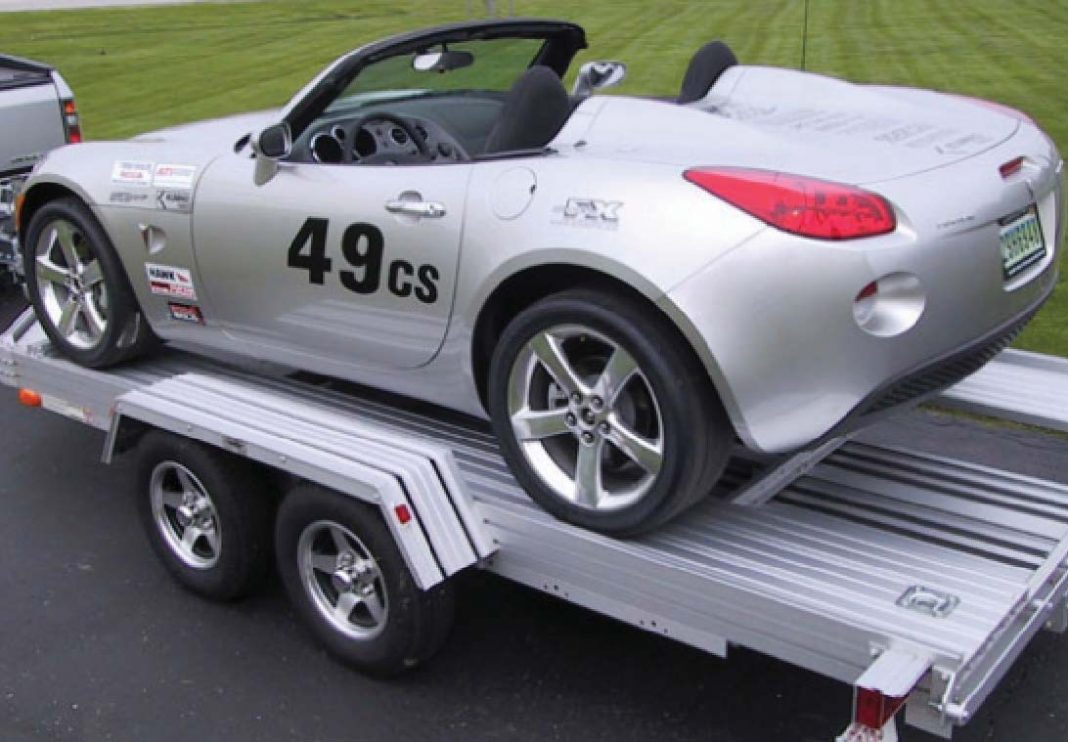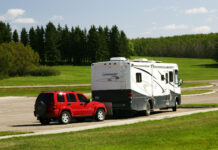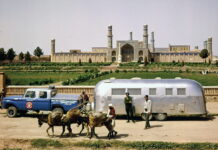When you tow a classic car or a very special vehicle, the best method is to use a flatbed trailer, or even better – an enclosed cargo trailer.
Many motorhome owners today choose to tow a small car or SUV along on their travels. After reaching the campground, they can unhook the car and go sightseeing, shop-ping, or visiting friends and relatives in the area instead of driving their large motorhome in downtown traffic. I must admit that I have occasionally used the car to go for help when the motorhome had a breakdown on the road.
Some RV’ers use the towed car as a pack horse, carrying items that they do not want or have room for inside the RV. If you do this, you must remember not to exceed the Gross Combined Weight Rating of your motorhome.
What can you tow?
Many manual transmission cars can be flat towed without any modifications, and you can tow any front-wheel-drive manual transmission vehicle as far as you want and as long as you want. If the car has an automatic transmission that is lubricated by the output shaft, it can be flat towed with no problem, but if it is lubricated by the input shaft of the transmission, you will need an auxiliary method such as a lubrication pump from Remco that is controlled by the ignition of the motorhome, to keep the cooling fluids circulating while you are towing.Some RV’ers who travel a long distance before using their car at their destination disconnect the drive shaft to uncouple the transmission from the differential at the rear wheels.
Most four-wheel-drive vehicles that have a manual transfer case and an automatic transmission can also be towed with the transmission in Park and the transfer case in Neutral. Be sure to unlock the steering wheel before towing. Now that electronic speedometers have replaced the old cable-driven units, logging mileage is a thing of the past, since the odometer does not work when the engine is not running.
Tow Dollies and Trailers

If you change cars often and do not want to install a tow bar and lighting package, you may place your car on a flatbed trailer or inside a cargo trailer so that all wheels are off the ground. We have often seen classic cars towed in this manner as the owners do not want excess wear on the running gear. After arriving at the campground, they remove the car and then tow the trailer to a holding area, since there is often not enough room for the motorhome, car, and trailer at the campsite.
Some RV’ers use a tow dolly, and strap the front drive wheels down on the dolly. This is a convenient approach as it does not require any modifications to the vehicle. If you change cars frequently, or are prevented by a lease agreement from mounting a base plate, the dolly is your solution. Do not tow a car with the rear wheels on the dolly as the caster and camber alignment of the front wheels will not allow proper tracking when tow-ing it backwards.
Tow Bars
Many RV’ers prefer to tow their car with all four wheels on the ground. A base plate is mounted to the frame at the front of the car, and a tow bar then connects it to the rear of the motorhome. Many owners install a set of diodes to connect the existing car tail lights to the turn and stop signals of the motorhome. The diodes prevent feedback to the com-puter in the car.
We use a Tow Daddy converter from Hopkins Mfg. to connect the tail lights of our 4×4 Jeep Liberty and we use a 10,000-pound Blue Ox Aventa telescop-ing tow bar and base plate for our Jeep Liberty since we often have to carry extra magazines to a rally. The 5000-pound Blue Ox Aladdin tow bar is light-er since it is made of aluminum and it is the choice of most motorhomers. Both of the tow bars store on the rear of the motorhome to relieve weight on the front of the car when not towing. Some other manufacturers of quality tow bars are Demco Mfg. and Roadmaster.
Tips for Towing
If you are using a telescopic style tow bar to connect your car, reverse the car to lock one of the legs, and then turn the steering wheel towards the shorter leg. This forces the car to move to that side extending and locking it as you drive forward. Don’t forget to put the transmission in neutral and release the parking brake if towing a manual transmission vehicle, or put the transfer case of a 4WD in neutral with the transmission in Park before going ahead.
You can back up with the flatbed trailer combination, but not with the tow dolly or tow bar system. If you get lost and have to turn around, the car needs to be taken off the dolly or the tow bar needs to be unhooked before backing up. It takes me about thirty minutes to get the car off the dolly, use the car to move the dolly out of the way, and then remount the car back on the dolly after the motorhome is turned around. With the tow bar system, it is simply a matter of pulling two pins and driving the car out of the way, turn the motorhome around, and then reconnect the pins. An elapsed time of about five minutes. One thing that you have to remember when unhooking the car is that it is freewheeling. Always disconnect on level ground or set the emergency brake to prevent the car from running away. Before moving onto a campsite I always unhook the car when it is in a straight line behind the motorhome.
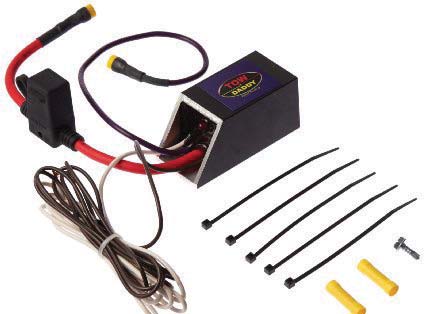
What have we towed?
It is always a good idea to consult your automobile manufacturer to determine what you can tow behind your motorhome. You certainly do not want to void any warranties on the towed vehicle!
In 2016, all Ford products with an auto transmission can be towed on four wheels, although Fords with independent rear suspension tend to vibrate when towed. The Buick Enclave all-wheel-drive and front-wheel-drive models are now approved for towing and the Cadillac Escalade with two speed 4×4 transfer case is also approved for towing behind your motorhome. The SRX can be towed as long as the engine is run for five minutes at each fuel stop. Chevrolet models can be flat-towed with the auto-matic transmission in neutral except for the Cruze, which has to have a manual transmission.
You can flat-tow the Malibu with the 1.5L engine and no Active Shutters; to prevent the battery in an Equinox or Acadia from being drained while towing several fuses need to be removed that control the Electronic Control Module, radio, OnStar, and air-conditioning. You could have a disconnect switch installed. The Sonic RS with automatic transmis-sion cannot be towed four wheels down. There are still some older Saturn models on the road that can be flat towed with no modifications.
The Dodge Dart with the 1.4L engine and auto transmission can be towed, but the 2.0L or 2.4L can only be towed if equipped with the manual transmission. All Fiat manual transmission models can be flat towed with the transmission in neutral. Jeep Cherokee, Grand Cherokee and Wrangler can be towed four wheels down, but the Compass and Patriot can only be towed if the manual transmission is in neutral. Nissan models like the 370Z, Frontier, Sentra, and Versa can only be towed four wheels down if they have a manual transmission.
For more information…
Tow Bars
Acar Industries 330-562-2222
Blue Ox 888-425-5282
Cequent Trailer 715-693-1700
Demco Dethmers 800-543-3626
Eaz-Lift 800-634-8152
Remco 800-228-2481
Roadmaster 800-669-9690
Tow Dollies
Demco-Dethmers 800-543-3626
Master Tow 800-522-2190
Roadmaster 800-669-9690
Car HaulersTrailex 330-533-6814
Master Tow 800-522-2190
Auxiliary Brakes
Blue Ox 888-425-5282
Brake Buddy 800-524-1548
SMI 800-893-3763
Tow Brake Intl 800-927-6778
Tow-V-Aire 888-464-1105
US Gear 800-874-3271
Honda vehicles like the Civic LX, the Fit, and the HRV can only be towed four wheels down if they have a manual transmission. Honda recommends towing in neutral as long as you shift the gears through a specific routine. After connecting the tow bar, with the engine running, shift through the gears and fin-ish by going from drive to neutral, then shut off the engine.
Hyundai, Kia and Toyota models can only be towed when they are equipped with a manual transmission.
When towing, the tow bar should be as level as possible to the ground. The new tow bars that go on the back of the MH can have as much as six inches difference in height between the back of the MH and the front of the car. This can put a great deal of pressure on the motorhome’s hitch receiver during stops. Use a drop hitch to be sure the bar is level.
If you can’t see your “toad” while towing, (the vehicle is too low) get a magnetic base CB antenna, put it on your trunk lid with a red flag or install an eight foot fibreglass rod on the rear bumper of the car and you will have something to watch through your motorhome’s rear view mirrors.
If you plan to tow any distance, your motorhome transmission oil gets super hot and will start to break down quickly, so we would recommend install-ing a transmission oil cooler on your motorhome. A cooler only costs about $100-150 installed and you will increase the life of the transmission. It’s cheaper to install the tranny cooler than it is to buy a new transmission.
For safety reasons, the tow bar on your “toad”, and the hitch on the motorhome should all be rated as Class III (5,000 lbs) or more. If you don’t know for sure, call the manufacturers of he hitch or the motorhome.
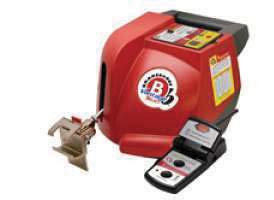
Do not attach a tow bar directly to the bumper on your “toad” unless you are also attaching to the frame. Most newer cars have so much plastic, and a shock absorber mounting, you cannot safely attach to the bumper by itself.
When towing a vehicle over 1,300 kg (2,860 lbs) in Canada you will require an auxiliary braking system with a breakaway switch on your toad for safety. Having the “toad” behind your motorhome will increase the stopping distance of the motorhome by 50-70 per-cent. Some of the easiest auxiliary braking systems to use are made by Brake Buddy and Blue Ox.
When you are purchasing a new car that you want to tow behind your motorhome, be sure to ask to see the driver’s manual and look up the pages on Recreational Towing” to be sure that it is towable.
For the last 24 years, Garth Cane has been the Technical Director for RV Lifestyle Magazine. He is a member of the automotive Journalists Association of Canada, was professor of the Apprenticeship program for RV Service Technicians in Ontario. He volunteers as Chairman of the CSAZ240 and the Recreation Vehicle Safety and Education Foundation.






